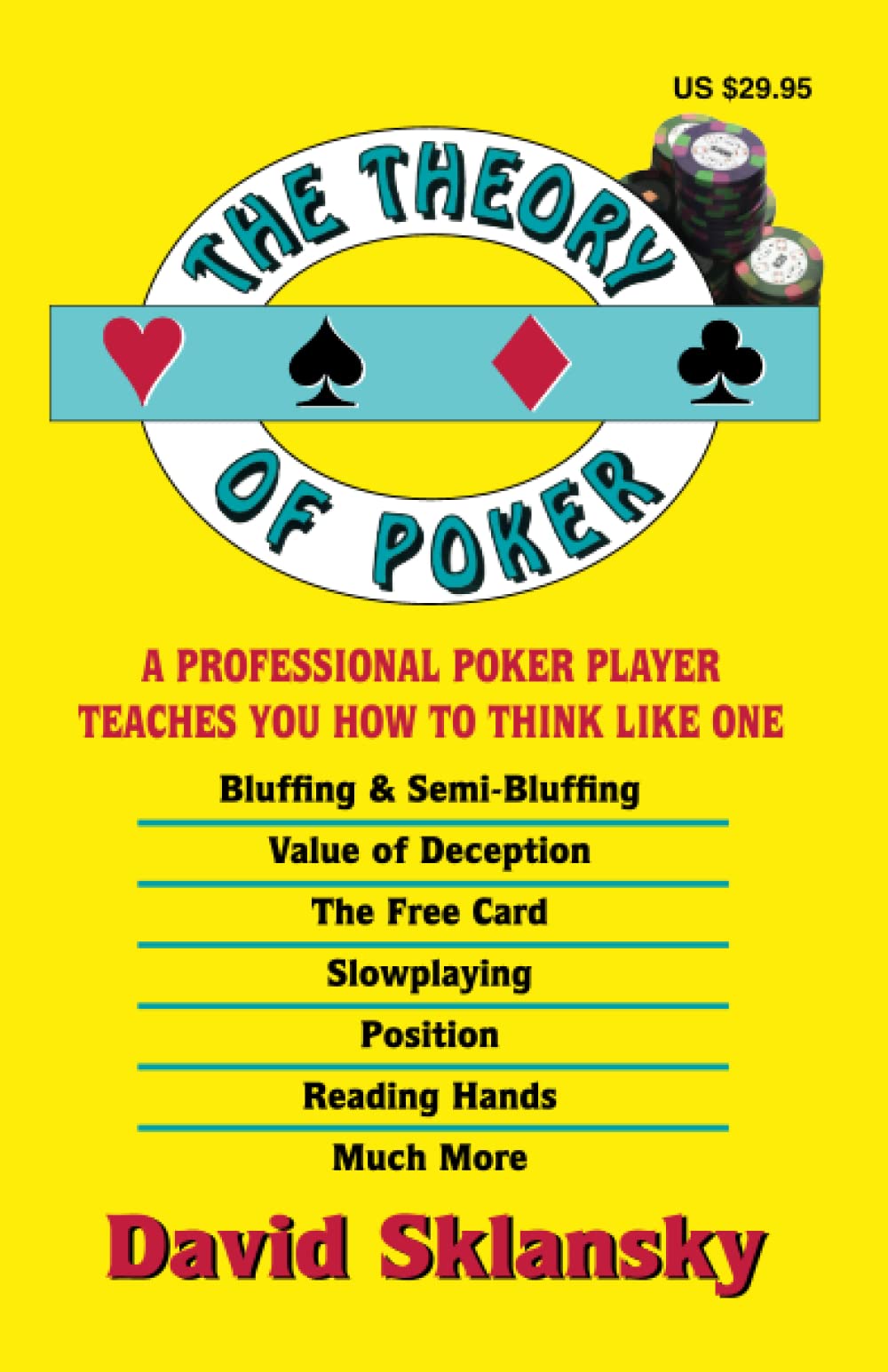The Theory of Poker by David Sklansky: A Masterclass in Strategic Thinking

The Theory of Poker by David Sklansky is an iconic and timeless masterpiece that has revolutionized the way poker is played and understood. Widely regarded as one of the most important books ever written on the subject, Sklansky’s work presents a comprehensive and in-depth exploration of poker strategy that remains relevant and invaluable to players of all skill levels.
Sklansky, a renowned professional poker player and theorist, combines his wealth of experience with a sharp analytical mind to deliver a book that is as informative as it is engaging. He presents the reader with a deep understanding of the fundamental concepts that govern poker decision-making, emphasizing the importance of strategic thinking and mathematical reasoning in every hand.
One of the book’s greatest strengths is Sklansky’s ability to break down complex ideas into simple, easily digestible concepts. He introduces readers to essential concepts such as pot odds, implied odds, expected value, and the importance of position. Through clear and concise explanations, he helps readers grasp these concepts and apply them effectively to improve their decision-making process.


Sklansky goes beyond the surface-level tactics commonly found in other poker books and delves into the underlying theories and principles that drive successful play. He explores topics such as hand selection, bluffing, semi-bluffing, the art of deception, and the psychology of poker, providing a holistic view of the game.
The book also contains numerous illustrative examples and case studies that effectively demonstrate the concepts being discussed. Sklansky uses hypothetical hands to present real-life scenarios, allowing readers to observe the thought processes and strategic considerations involved in each situation. This hands-on approach significantly enhances the learning experience and aids in the practical application of the principles discussed.
Furthermore, The Theory of Poker goes beyond specific poker variations and focuses on the broader principles that can be applied across different games and formats. While the book primarily covers limit hold’em, the strategies and concepts presented are transferable to other forms of poker, making it a valuable resource for players regardless of their preferred game type.
One aspect that may be daunting for beginners is the level of complexity in some sections of the book. Sklansky’s mathematical approach to poker can be intimidating at first, especially for those new to the game. However, with patience and persistence, even novice players can gradually absorb the knowledge and benefit from the insights provided.
In conclusion, The Theory of Poker by David Sklansky is an indispensable resource for anyone serious about improving their poker skills. Whether you are a recreational player aiming to sharpen your understanding or a seasoned professional seeking to refine your strategies, this book offers a wealth of wisdom that will undoubtedly elevate your game. Sklansky’s meticulous exploration of poker theory and his ability to communicate it effectively make this book a must-read for any poker enthusiast.
Rating: ★★★★★ (5/5)